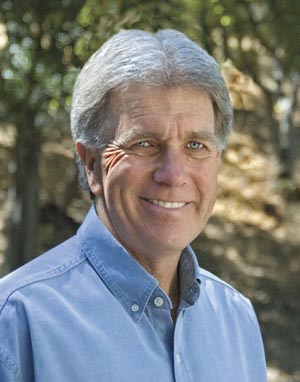Getting Out: You’ve heard the hackneyed quip,
”
My idea of camping is three days at (insert name of posh resort
here).
”
Even the most ardent fan of backpacking does not want the
camping end of a Camping vs. the Maui Hyatt Regency debate.
You’ve heard the hackneyed quip, “My idea of camping is three days at (insert name of posh resort here).” Even the most ardent fan of backpacking does not want the camping end of a Camping vs. the Maui Hyatt Regency debate.
That’s because backpacking involves considerable work, discomfort and very few Mai Tai’s. But over the last 10 years, an ultralight revolution in backpacking equipment has taken a great deal of the discomfort out of the equation.
Thru-hiking is a term describing the task of hiking epic trails. In the U.S., it is most commonly associated with the Appalachian Trail (2,179 miles), the Pacific Crest Trail (2,650 miles) and the Continental Divide Trail (3,100 miles). Thru-hikers, in an effort to lighten their loads over these incredible distances, have spearheaded innovation in backpacking equipment that can shave many pounds from your load.
An editorial aside: I am not a fan of ultralight backpacking. Thru-hiker Scott Williamson completed a yo-yo circuit of the Pacific Crest Trail (Mexico to Canada to Mexico — 5,600 miles) in 197 days, averaging 27 miles per day, or 35-40 miles per day when not dealing with snow. This is an amazing athletic feat but, to my mind, defeats the whole point of backpacking. We spend our work-a-day lives achieving, meeting deadlines, missing the journey to accomplish a goal. Backpacking is our opportunity to slow down and enjoy being there; to travel into the wilderness, not through it. How deeply can you experience the solace of the natural world walking 40 miles a day?
But Williamson’s load, less food, weighed 8 1/2 pounds! Sit down, Scott. I’d like to chat with you.
Choosing backpacking equipment is a balancing act between weight and comfort. For such a light load, Williamson certainly sacrificed some comforts that I am not willing do without. But the influence of ultralight backpackers has placed great pressure on manufacturers to lighten all the equipment items that backpackers use.
A standard two person double-wall tent (tent plus rainfly) once weighed about five pounds. This year, Big Agnes Company released the Fly Creek UL2 that weighs an amazing 2 pounds, 2 ounces. Reviews say it is plenty big enough, pitches easily and is totally waterproof even in high winds. A couple years ago, I bought a new backpack and sleeping bag. Those two new items alone lightened my load by seven pounds.
Clearly, we have something to learn from the ultralighters. When my son and I hiked the John Muir Trail, our full packs after a food resupply weighed about 50 pounds. In the same situation today, my pack would weigh nearly 35 pounds without any significant sacrifice in comfort. That weight-saving is the difference between drudgery and carrying a comfortable load.
If you are an old hand, or if you are new to backpacking, it is wise to learn about the ultralight options and measure their offerings against your comfort needs. Ray Jardine (www.RayJardine.com) was an early ultralight proponent. His book “Trail Life” is a complete treatment of the subject. While all manufacturers have ultralight options, Golite (www.Golite.com) is a company dedicated to only producing ultralight tents, backpacks, sleeping bags and clothing.
Start with a good lightweight backpack. My old backpack weighed about 7 pounds. I now own a Gregory Z-Pack. At 3,500 cubic inches and 3 pounds, 5 ounces, it meets any backpack need I will ever have and is very comfortable to carry. A number of manufacturers offer a wide array of good options that a knowledgeable retailer like REI or Down Works (www.DownWorks.com) in Santa Cruz can help you sort through.
Now, if we could only do something about the distressing shortage of Mai Tai’s in the backcountry.










